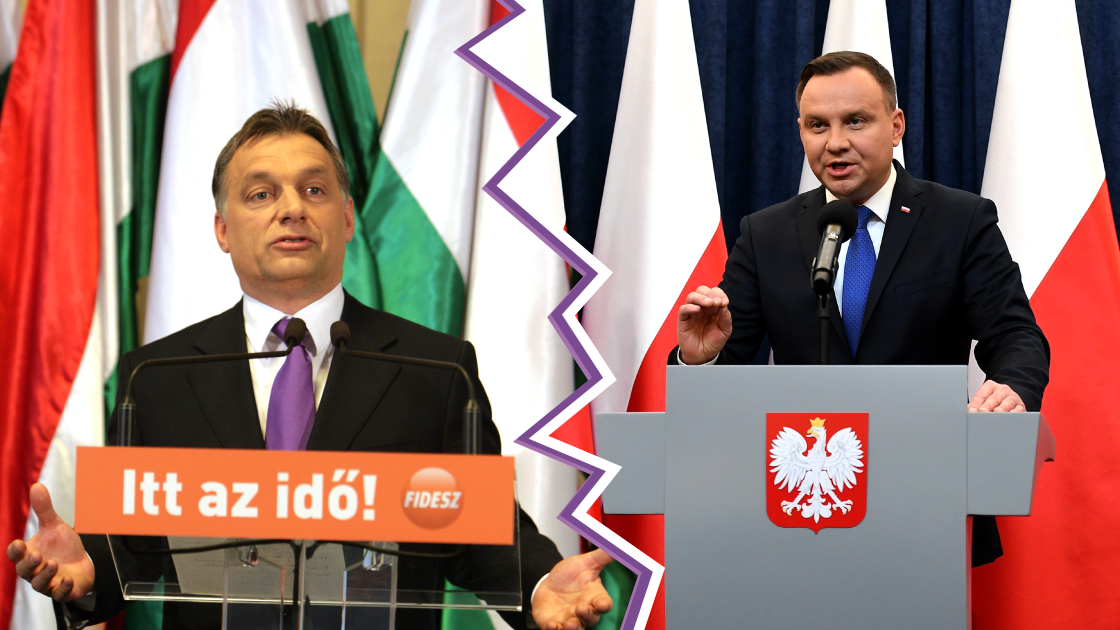The https://english.atlatszo.hu use cookies to track and profile customers such as action tags and pixel tracking on our website to assist our marketing. On our website we use technical, analytical, marketing and preference cookies. These are necessary for our site to work properly and to give us inforamation about how our site is used. See Cookies Policy
Elections in an illiberal democracy – the reality of the current Hungarian political system
Over the past 12 years, it has been said many times that something has changed in Hungary, that there is no longer any rule of law or democracy. In contrast, before elections, opposition parties enter the contect and the media report on the events as if they were a ‘normal’ multi-party contest, with the only difficulty being the electoral system. At Átlátszó, we have tried to think about the role of elections if we take seriously what the press, politicians and experts say about the current political system.What do we mean by a hybrid regime? Is Hungary really in a grey zone between democracy and autocracy? What are the characteristics of the Hungarian regime, and can power be defeated in elections with these characteristics?
“Hungary is a dictatorship, let’s defeat it in democratic elections!”

– is a rough summary of the attitude of Hungarian opposition parties and the press over the past 12 years. At first glance, this statement, which seems self-contradictory, has not been eroded by the results of several elections.
Yet, several academic publications have been produced in order to explain the situation in Hungary. All of them argue that the Hungarian system has authoritarian features, but also competitive elements. In other words, they do not call the existing order a dictatorship, but, if their claims are accepted, the elections of the Orbán regime cannot be approached in the same way as elections in Western Europe or North America.
Flawed democracies, illiberal systems
“The new state we are building in Hungary is an illiberal state, not a liberal state. It does not deny the fundamental values of liberalism, such as freedom, and I could mention a few others, but it does not make this ideology the central element of state organisation, but it contains a different, specific, national approach” – Viktor Orbán, Prime Minister of Hungary said in his speech in July 2014.
The term was first used in 1997 by journalist Fareed Zakaria in an article in Foreign Affairs. According to his interpretation, illiberal democracies formally operate multiparty elections, but do not fulfil the ‘liberal’ components of democracy, such as the separation of powers, and do not ensure the protection of fundamental freedoms. More recently, the term hybrid regime is used to describe similar systems.
Every year, Freedom House’s Nations in Transit report scores the post-Soviet states on the extent to which the principles of democracy are upheld. The 2018 report found that Hungary, while still considered free, is the least democratic member state in the EU. Last year, the situation deteriorated further, according to the organisation, with Hungary moving into the transition or hybrid regime, the “grey zone” between democracies and autocracies.
In 2016, Attila Gyulai and Juliane Stein-Zalai were the first in Hungary to write about hybrid regimes and the limitations of the conceptual approach. In 2018, political scientist Gábor Filippov published an analytical article on 24.hu entitled The age of hybrid counter-revolution, which dealt with the functioning of hybrid regimes and also discussed the Hungarian hybridisation process.
According to Filippov, since the Cold War, authoritarian politicians have realised that they do not necessarily have to destroy democratic institutions, but that it is much easier to “hack” them, i.e. to keep the instruments of democracy, while governing behind democratic scenes with autocratic means.
All this has led to the emergence of hybrid regimes that are neither dictatorships nor democracies, situated between the two extremes of the scale.
Hybrid regimes can be very diverse – the key distinction is whether there is a realistic chance of replacing power, i.e. whether they hold elections at which the opposition can run. In these cases we can speak of competitive authoritarian regimes, as political competition is real, but unfair, because those in power gain systemic advantages. Steven Levitsky and Lucan Way call such an environment an “uneven playing field” in their book.
András Bozóki and Dániel Hegedűs, in a 2017 study, put the Orbán regime in a special category, the so-called externally constrained hybrid regimes. According to them, its unique nature is mainly due to the paradoxical situation that it is is part of the European Union, which consists of member states with democratic systems, and thus the EU is both a constraint and a sustainer of the Hungarian system.
The rival theory is a joint work by András Körösényi, Gábor Illés and Attila Gyulai. They reject the democracy-dictatorship dichotomy and the idea of placing the established order in between, and distinguish between traditional, rational and charismatic rule according to the Weberian model. In their view, the Orbán regime is a democracy of charismatic rule based on direct delegation of authority, a plebiscitary democracy. In other words, it seeks to create a fault line where it can side with the majority, and this majority is represented by the leader, while at the same time it has a wide range of instruments to manage popular expectations.
The different views that places the Hungarian system of national cooperation (in Hungarian: NER) between democracy and autocracy includes the existence of networks subordinate to power whose instructions override democratic choice. At the same time, the system of national consultations or the ‘child protection’ referendum on election day points to the plebiscitary nature of the system.
What is the ‘system of national cooperation’?
Although the descriptions of the systems presented are widely known, they hardly change the discussions, reports and analyses of the election. Experts often describe the electoral struggle as a struggle between unequal forces, whereas, if we take seriously what has been published in academic literature, we are not simply talking about a quantifiable difference in resources and conditions, but about a qualitatively different system.
The Hungarian system cannot be described in terms of Western concepts of multiparty rivalry.
The current Orbán regime is often compared to the Kádár era – this is of course wrong. But there are indeed some striking similarities. Both regimes are based on attitudes of upward conformity. However, it is characterised by spontaneity and adaptability. It does not seek to retaliate, but to exhaust, and mostly to assimilate. At the same time, the prevalence of attitudes of loyalty, conformity, compliance, submission, creates structural inadequacies that the system is aware of. Merit-based selection is narrowly enforced, and a multitude of unsuitable actors are pushed to the surface, therefore, new top-down solutions must be constantly sought to remedy structural problems.
For a very, very long time, the top layer of leadership in the Kádár era was a narrow circle, all of whom had entered politics and held various levels of leadership/organising positions before the advent of socialism. And even in the Orbán era, the new actors in the political leadership (Katalin Novák, who was just elected the first female president, or Judit Varga, Minister of Justice) are the faces of the system, but not the actual decision-makers. The important positions are occupied by people who had already played a major role in the first Orbán government (Mihály Varga, Minister of Finance, Sándor Pintér Deputy Prime Minister of Hungary, László Kövér, speaker of the National Assembly or Antal Rogán,Minister of Orbán’s Cabinet Office) or who were around the decision-makers in the “last eight years” of the previous PM, Ferenc Gyurcsány ( such as János Lázár, former vice-president of Fidesz, Gergely Gulyás, Minister of the Prime Minister’s Office or Máté Kocsis, leader of the Fidesz parliamentary group).
There are, however, obvious differences between the two regimes. Viktor Orbán does not want, and even if he did, he could not prevent those who are dissatisfied with conditions and/or wish to make a living elsewhere from leaving the country. In their case, he is ‘merely’ significantly limiting their participation in political life.
This also includes the difference that the Orbán regime does not prohibit, but in some cases even finances anti-power criticism, agitation and activity.
In fact, it would cost nothing to cut party subsidies significantly, to abolish party foundations, to reduce the salaries of professional politicians – which would hardly meet with public sympathy. In opposition circles and in the independent press, however, this phenomenon is not a topic of discussion.
The opposition monotonously and routinely carries out what it perceives to be anti-government activities, and it does not even realise that the government is not necessarily opposed to this, but even keeps the dissatisfied in a regular reservation by maintaining certain places and organisations.
What will it take to make a change?
In addition to government propaganda, the opposition reinforces the impression that party struggles on the surface are the determinant of a supposed change. In Hungary, however, it is not a balanced political market in which participants compete according to the same rules for all, and a possible change of government does not affect the foundations of the system. The system competes with itself rather than with anything else.
The scope for a change of government does not depend on campaign techniques, credibility, professional organisation, but on the following:
- The struggle of redistributive, rewarding opportunities against inflation, rising prices, shrinking income-earning opportunities. The 2022 election will be the first in the history of the Fidesz where we arrive at the election date without clear real wage growth.
- The ability to turn everything into a political yes/no question in a race against a rapidly changing international landscape. Communication had to be changed several times during the coronavirus pandemic, and at the moment, news of the war is dominating the news. The question is whether the government will be able to present itself as a guarantor of peace and security or whether their past links with the aggressor state will raise doubts in wider circles.
- It is not only a feature of democracy that a leader is removed if he is no longer considered fit to lead. If doubt accumulate at the nodes of the subordinate systems, in the public administration, the banking sector, in important positions in the law enforcement agencies, this can lead to failure. There is no critical level of dissatisfaction within the system at the moment, but with such high inflation and an unpredictable war situation, this issue of trust is open to the last minute.
Other countries with the same characteristics
We are also trying to put this issue in a wider perspective. The article of Gábor Filippov also highlights that what is happening in Hungary is far from unprecedented, with similar processes taking place in many countries from the 1990s.
Systems like Hungary’s generally have two things in common: the system does not use violence, and the fact that the country in question either has no united opposition or an opposition made up of parties and politicians who can be portrayed as incompetent actors. A similar approach has worked in Ghana or Nicaragua – although in the latter we have seen a number of cases in recent years of the imprisonment of those who challenge the authorities.
Hybrid regimes include Ukraine and parts of the Balkans, and according to some sources, another EU Member State, Poland, now falls into this category.
While Freedom House classifies Poland as a semi-consolidated democracy, it notes that since 2017, the deterioration of democracy in Poland has been even more spectacular than in Hungary.
In many cases, we can already see good examples of how hybrid regimes have been overthrown. These include Mexico and Slovakia in the late 1990s, or Malaysia, where the opposition victory in 2018 was led by a politician (Mahathir Mohamad) who had been prime minister and, 15 years later, was active in overthrowing the new leader of his former ruling party. In Chile, a referendum called by the president himself in 1988, because he was so sure of victory, brought an end to the Pinochet dictatorship.
Over the next few weeks, we will take a closer look at what hybrid systems look like in other countries, how they are similar and how they differ from Hungary’s. We will also try to find out how the opposition can succeed despite the unequal fight, because the main strength of hybrid systems is also their weakness: as long as elections are held, there is always a minimal chance of replacing the incumbents. We will also focus on further presenting the emblematic electoral districts and attempt to look beyond static electoral arithmetic to examine the dynamics of the system, as elections do not depend primarily on party competition, but on the functioning of the system itself.
Translated by Zita Szopkó. The original, more detailed Hungarian version of this article was written by András Hont and Zita Szopkó, and can be found here.
Hungary. What do you know about Hungary? from atlatszo.hu on Vimeo.



